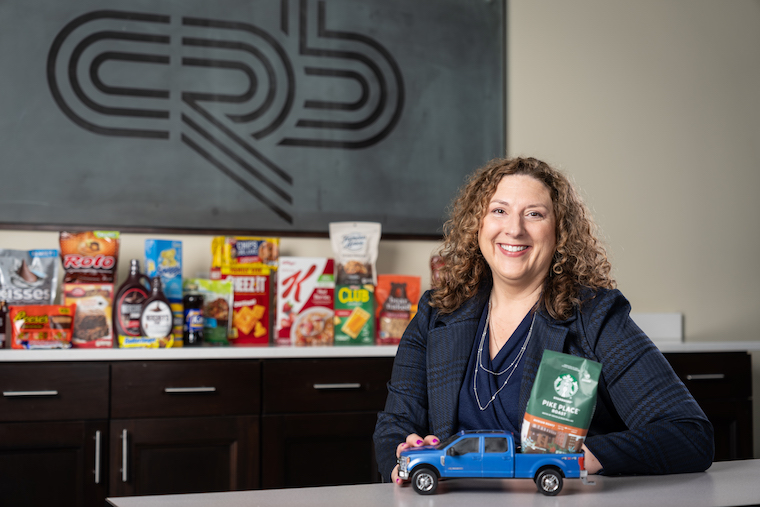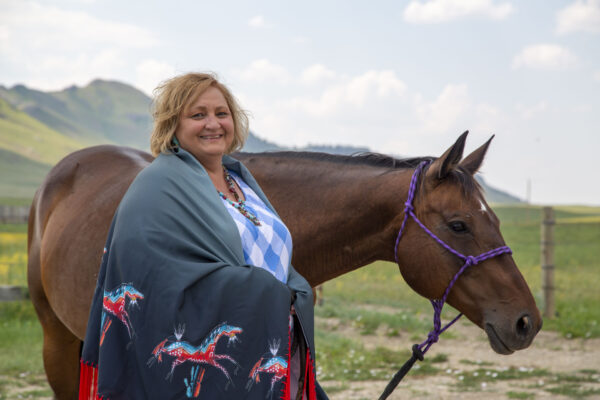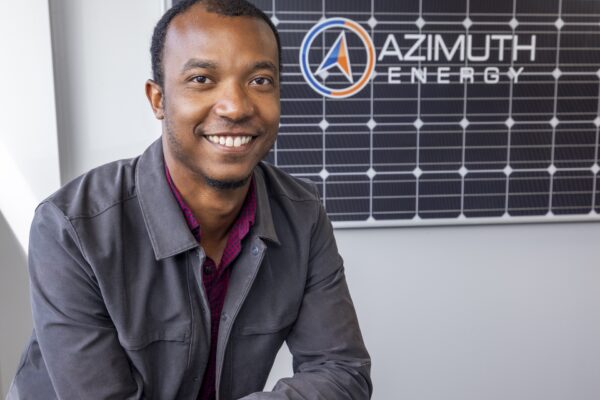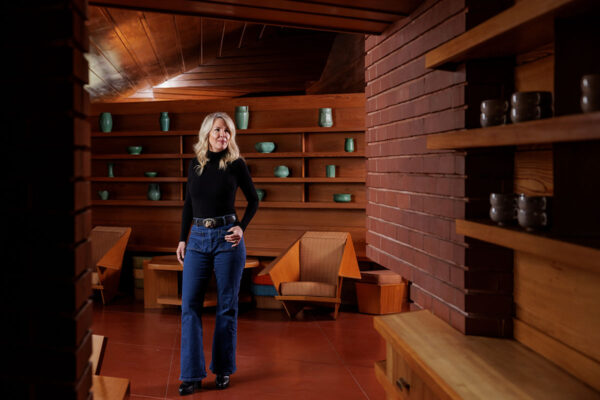While strolling down a grocery store aisle, some Pop-Tarts catch your eye. The thin, brightly colored box falls into your cart. Like most shoppers, you don’t give the package a second thought until it’s time to toss it in the recycle bin.
As a senior packaging engineer at CRB, a construction and consulting company, Katie Ireland, PMBA ’99, has a different perspective. “Every company I have worked for has a different perspective of packaging and supply chain needs. I now draw from those experiences for CRB clients,” she says.
Working for heavy-hitters like Starbucks, Kellogg, Hershey, Ford Motor Company and Unilever, Ireland has designed new and modified packages, set up complex factory lines and handled global logistics for products ranging from coffee beans to the hybrid Ford Escape SUV. One of the many packages she has shaped? A deceptively simple box filled with 48 toaster pastries.
Before Ireland’s intervention, Pop-Tarts came in a corrugated case — the kind with fluting in between. She proved that a different type of packaging, Z-flute (or zero flute) paperboard, could effectively protect the heavy, delicate pastries. Pop-Tarts became the first product in the world to launch in this carton material.
Using less packaging is a win for companies, consumers and the environment, Ireland says. Small changes like removing a foam insert from a bottle cap (as she did for Hershey’s syrups) can reduce waste and lead to more efficient recycling. Overall, she sees sustainability as an increasingly important part of her job.
In the late 1990s, Ireland decided to add business knowledge to her technical expertise. At that point, marketing teams initiated most of her projects. “I thought, ‘Who’s making all these decisions? That’s where I want to be,’” she says. “I liked making the changes, but I wanted to help dream them up, too.”
While in the evening MBA program at Olin Business School, Ireland focused on international business and marketing. One course included an 18-day experience in China and Japan, where graduate students conducted real business meetings on behalf of St. Louis–area companies. Years later, when tasked with designing the first Starbucks packaging lines in China, she recalled lessons from that experience.
“Different protocols exist in different countries,” Ireland says. “In China, there was a lot of planning and a lot of relationship work.” The result? A LEED-certified facility that served as the vision for how Starbucks plants would be built or upgraded going forward.
In her role at CRB, Ireland works with food and beverage clients on design, construction and consulting projects. “I get to help our clients realize their dream, or even help them build their dream if they’re not quite sure what they want yet,” Ireland says. “I think that’s the biggest impact the MBA has had on my career. Whatever clients want to make, I can dream it and build it.”



